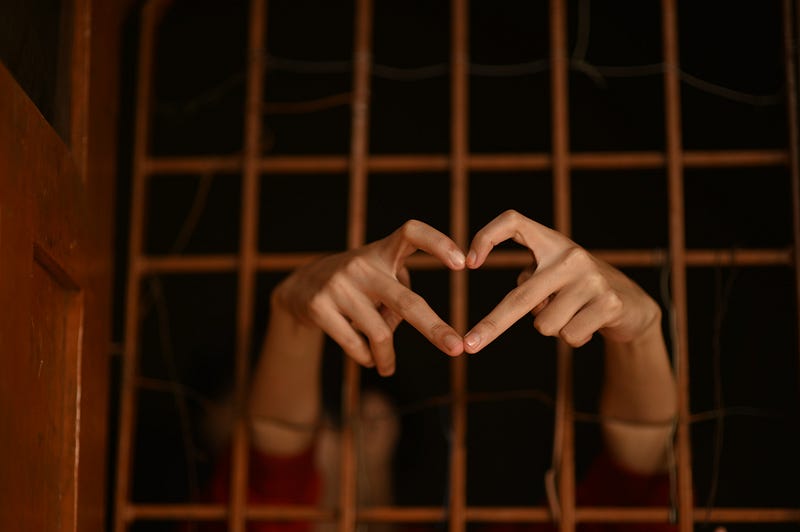A society based on punishment makes us all less safe

Progressive District Attorneys such as San Francisco’s Chesa Boudin are being attacked with the insult: “soft on crime.” Boudin faces a recall election largely funded by wealthy donors who demand more people be jailed and more police be hired to “keep us safe.” But studies show punitive “law-and-order” policies can actually create more crime than they prevent.
This may sound counter-intuitive, because convicts cannot commit further crimes while behind bars, except against other prisoners. And data does show a reduction in overall crime of about 1–2% when rates of imprisonment go up 10%.
Even this small benefit appears to be self-limiting. According to a paper by Dan Sterman of the Vera Institute of Justice, “Analysts are nearly unanimous in their conclusion that continued growth in incarceration will prevent fewer, if any, crimes, and at substantially greater cost to taxpayers.” Against a slight short term benefit of removing potential criminals from society, he says, we need to weigh the long-term disruption caused by imprisonment and its stimulus of future crime.
District attorneys make a big difference in how many people go to prison for how long. They decide whether the justice system focuses on punishment or safety. When it comes to crime prevention, tougher is not necessarily better. We need well thought-out social approaches.
Crime-causing effect of incarceration
Sending people to jail or prison is like sending them to criminal trade school. An article in Crime Museum.org analyzed, “Inmates are segregated from the general public and forced to live in a society with people for whom crime is a way of life. For many, time spent behind bars will push them farther into a life of crime.”
Incarcerated people often suffer abuse at the hands of jailers and other prisoners. They are isolated from their families who would give them love and support if they could. They may well be traumatized, beaten, or raped, leaving them angry, fearful and potentially violent.
When they do get out, they have few job prospects , because few will hire ex-convicts. They may have lost their job or their home because of time spent in jail. They can’t keep up payments for child support or rent.They may have lost rights including the right to live in public housing, to apply for public assistance, to take out student loans, or to vote. That is why a ten year study of 401,288 state prisoners by the National Institute of Justice (NIJ), found that “An estimated 68% of released prisoners were re-arrested within 3 years, 79% within 6 years, and 83% within 9 years.”
Ex-prisoners were arrested an average of 5 times each during the course of the study. Prison and social conditions had turned them into career criminals.
Some experts once hoped that prisons could rehabilitate prisoners through fear of re-imprisonment, therapy, job training, mentorship, or religion, but studies never showed significant benefit. Very few American prisons even try anymore. An article in the American Psychological Association Monitor found that, “A combination of strict sentencing guidelines, budget shortfalls and a punitive philosophy of corrections has made today’s prisons much more unpleasant — and much less likely to rehabilitate their inhabitants.”
Raising generations of criminals
Imprisoning parents traumatizes children, and many of them act out their trauma violently. According to the NIJ, ”Children of incarcerated parents are, on average, six times more likely to become incarcerated themselves.”
That’s a lot of additional crime, and it’s a totally logical outcome. Children of imprisoned parents will have less money, less secure food and housing, fewer educational opportunities and less parental support. They also have shorter life expectancy. They may not see realistic alternative paths. Having an imprisoned role model might lead some to figure, ‘Why not me?’ Although there are few long-term studies and no clear consensus, it seems clear that locking people up can create more crime.
Does fear of prison deter crime?
Other than getting criminals off the street, the main argument given for incarceration is deterrence of would-be offenders. Won’t people tend to avoid actions that could land them in prison? Seems logical, but again, data shows that the effect of deterrence is minimal.
A meta-analysis in Justice Quarterly by Christy Visher of the University of Delaware of found that higher rates of imprisonment may deter crime, encourage more crime, or have no effect. As sociologist Daniel Nagin explains in the journal Crime and Justice, if you have family, neighbors, and friends in prison, going to jail no longer causes shame. It’s just what people do.
On the other hand, ignoring crime tells would-be criminals that society doesn’t care what they do. People funding the recall of Chesa Boudin charge him with releasing arrested people too readily. They call it, “Catch and release,” a policy they say causes more crime.

True, as with raising children, there have to be some consequences for hurtful acts, or people will keep doing them. But taking crime seriously does not have to mean incarcerating those accused. Fortunately, there are dozens of alternatives to incarceration, including restitution, community service, probation, and rehabilitative services. Such alternatives call for people to be supervised and supported, not released and forgotten.
According to the advocacy group Families Against Mandatory Minimums, these alternatives “keep people with their families, in their neighborhoods and jobs, and allow them to earn money, pay taxes, and contribute to their communities…They protect the public by addressing the causes of crime, such as drug addiction, mental health issues and poverty.”
Such programs, some of which are called restorative justice, focus on making victims whole and moving offenders toward healthier lives. Restorative justice takes time and resources, though usually not so much as jails and prisons. According to his web site, DA Boudin is gradually expanding restorative programs, but there seems a long way to go. In a couple of high-profile cases, drug-impaired offenders released without enough support have gotten into fatal accidents in stolen cars, killing innocent people.
To make sentencing alternatives and restorative justice work, ordinary citizens will have to get involved in the lives of troubled people to mentor and assist them. Programs will have to be created to monitor and protect them. It’s not as easy as locking them up, but it beats sending them to prison and having them come out as hardened criminals.
Crime’s social causes
A former District Attorney told me that in his experience, neither the justice system nor police have much effect on crime. Crime’s causes are social. People steal mainly because they lack money. They become violent because they are alienated or mentally ill. Foster children are especially likely to lack support and be pushed to crime to support themselves.
Some causes are cultural. In a society that judges people by material possessions, some people will try all means to get some. If parents are too busy, overwhelmed or absent, they won’t be able to guide their children. Youth may not have other adults in the community to advise them. They may pick up habits of cruelty and violence from authority figures, government and media.
Public support for incarceration also has social causes. People hate living in fear and will do almost anything to feel safe. Studies may show that punishing millions of people in prison doesn’t make anyone safer, but such punishment may soothe fearful people’s fears.
Incarceration has strong economic and political benefits for the imprisoning class, including capitalists, for-profit prisons, prison supply companies, and police. 19th century railroad multi-billionaire (in today’s money) Jay Gould, famously said, “I can hire half the working class to kill the other half.” (Sometimes quoted as “half the farmers” or “half the people.”) Modern billionaires hire half the people to lock up the other half.
In small towns and cities around the country, prisons are the main employer. Mostly white, mostly rural, mostly poor guards are hired to control mostly Black, mostly poor, mostly urban prisoners. How much social unrest would there be among these groups if their prisons closed? Who fears this unrest?
Prisons are a tool of class war against the poor. As Michelle Alexander PhD wrote in The New Jim Crow, incarceration replaced slavery and segregation as a way of suppressing African-American people and dividing the working class. Despite Black Lives Matter activism and COVID-related prisoner releases, police budgets and mass imprisonment continue to increase.
In the 1970s, there were around 340,000 Americans incarcerated; today, there are over two million, far more than any other country in the world. The surge in incarceration began in the Nixon presidency and accelerated through all succeeding Democratic and Republican administrations. Joe Biden is a huge advocate of mass incarceration and used COVID funding to set off a new prison boom, according to Slate.com.
Prisoners are people too
We often forget that people who commit crimes are still people. The punishment prisoners suffer goes far beyond that suffered by most crime victims. They are legally kidnapped, restrained, battered, and robbed. They lose huge parts of their lives and relationships. Some people may be too violent to live in society, but most convicts just need some help to change. Often, their “crimes” are lifestyle choices that don’t hurt anyone.
Eric Reinhart wrote on Slate.com, “The long and ongoing history of abuse of incarcerated people makes plain that incarceration harms the health and safety of prisoners, staff, and the public. Even before COVID-19, researchers showed that incarceration takes from two years of life for each year spent locked up to about five years of life expectancy lost by age 45. And, as recent studies have underlined, the health of entire communities ultimately suffers as a result of America’s high incarceration rates.”
In spite of the science showing mass incarceration generates as much crime and far more suffering than it prevents, people have for decades been voting for prisons. Lately, though, attitudes are starting to change. Anti-incarceration DAs like Boudin and Lawrence Krasner in Philadelphia, have been elected around the country.
The Real Justice Project is an advocacy group that seeks to “elect civil-rights minded prosecutors to reduce mass incarceration, police violence, and injustice.”In four years, they have elected 18 DAs who have saved their cities millions and kept thousands of people out of jail.
But when these progressive DA’s s file charges against brutal police, or exonerate and free wrongly convicted people, they inflame police agencies and ultra-conservatives against them. Several cities including Philly and SF have seen publicity campaigns claiming crime is out of control because of insufficiently punitive DAs. In truth, crime is up in most cities regardless of their police and DAs. Some pro-police, tough-on-crime DAs like Sacramento’s Anne-Marie Schubert have seen surging rates of violent crime in their cities, but their policies are never blamed for the suffering.
Several progressive DAs, including Boudin face recalls around the country. But so far, voters have embraced alternatives to incarceration. In Philadelphia, DA Krasner fought off a well-funded effort, handily beating a law-and-order challenger.
Boudin is trailing in the polls and being massively outspent by far-right big money contributors, but maybe he will beat this recall if enough people come out to support caring, smart-on-crime policies.
— — — — — — — — — — — — — — — — — — — — — — — —
SF Friends: On June 7, we can choose to return to lock-them-up policies that cost the city millions, wound families and communities, damage health, and increase long-term crime rates. Or we can give DA Chesa Boudin more time to implement alternative justice approaches. Some of us might even participate. Vote NO on Proposition H. Contribute to the Real Justice Project.
— — — — — -
Thanks for reading! Please comment, share, or steal. Follow me on Twitter, on Facebook or my on Medium.com. Hire me for freelancing, editing, or tutoring on Linked In
